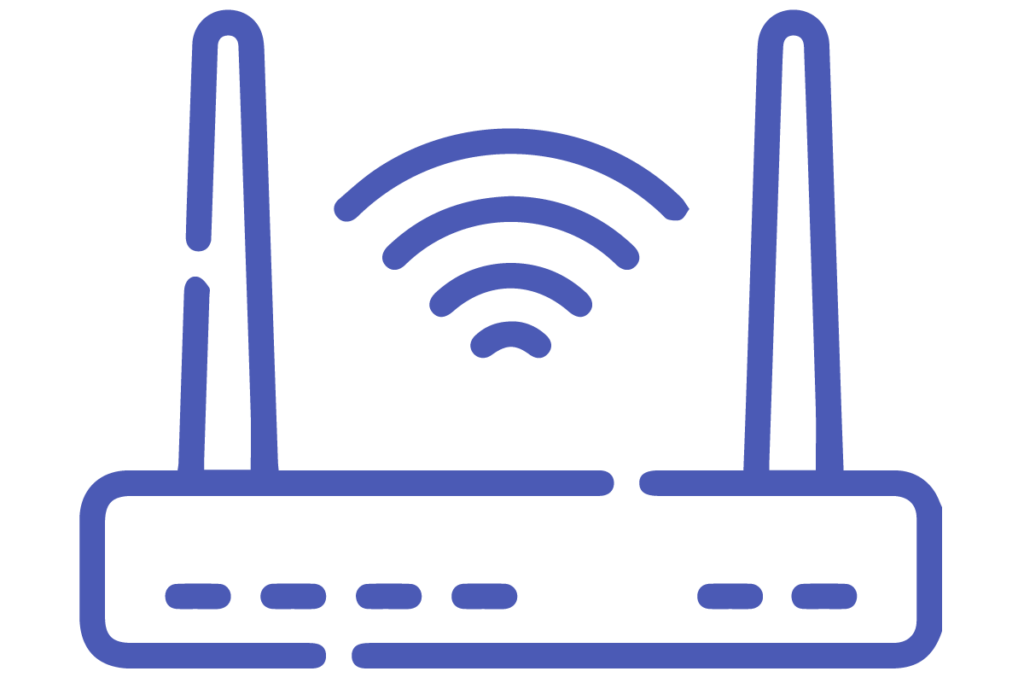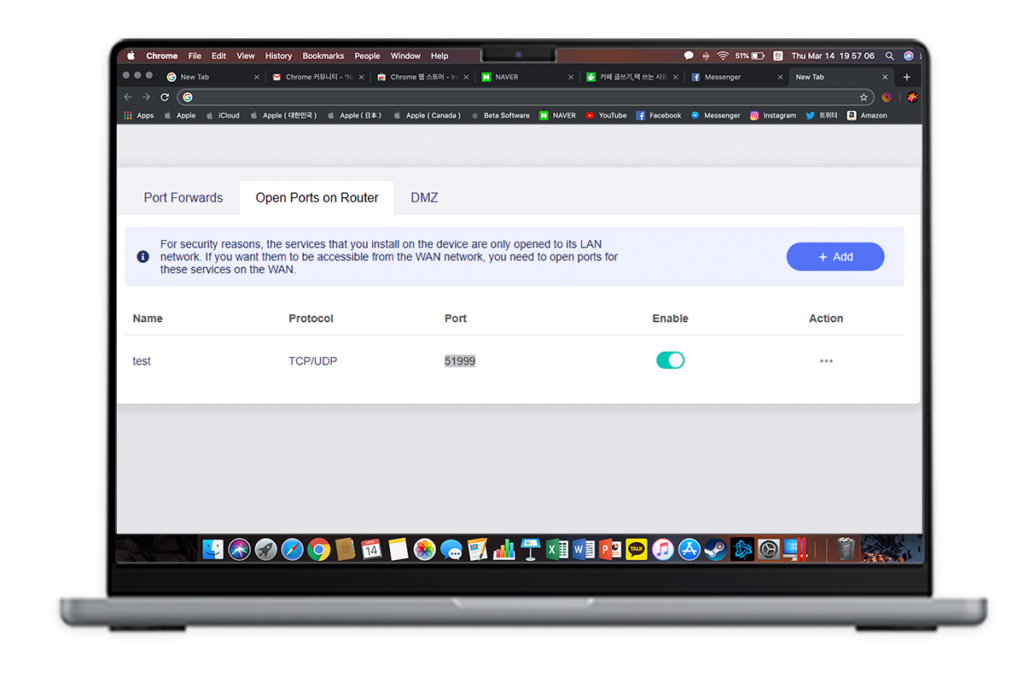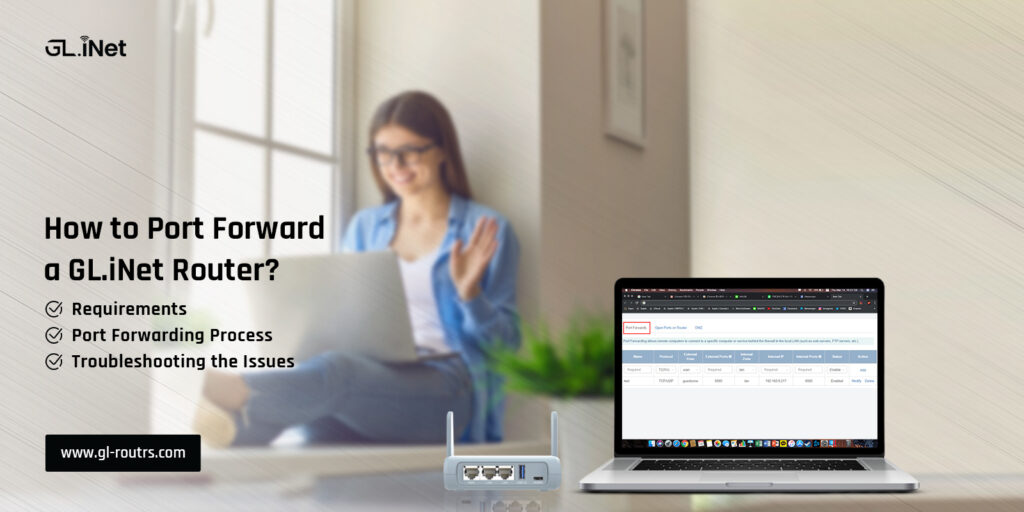How to Port Forward a GL.iNet Router?
Generally, GL.iNet router port forwarding is present in every GL.iNet router model but users are not aware of it and its functioning too. Hence, it is necessary to understand the Port forwarding first. It is way the through which your router instructs that data received through a specific port should always be sent directly to a particular device on the local network.
However, through GL.iNet port forwarding, users can control the devices or services within a local network from outside the network. Additionally, it allows you to open specific ports on your router, directing incoming traffic to a specific device or service connected to your network. Similarly, if you are looking for assistance with this process, then stay focused on this post.
Requirements to Port Forward a GL.iNet WiFi Router
While you are beginning the process of port forwarding, then you must have a few things to start and end the procedure. Let’s have a look:

GL.iNet WiFi router

Stable internet connection

Web or IP address

Admin login details

Ethernet cable

Computer/Laptop
What Are the Steps for GL.iNet Router Port Forwarding?
Additionally, before you start with the steps for the port forwarding, you must need to know that a static IP is necessary to carry out the process. So, to get the Static IP for port forwarding, you have to access the admin panel first. Hereon, we will talk through the entire process from IP to port forwarding. Let’s begin here!
- Firstly, log in to your GL.iNet router web interface via the default IP address.
- Once logged in, go to the “Network” or “Advanced” section, depending on your router.
- After that, look for the “Port Forwarding” or “Virtual Servers” option.
- Next, click on it, and a new page will appear.
- Here, on the port forwarding page, you will see options to add a new port forward rule.

- Further, tap on “Add New” or “Add” to create a new rule.
- Here on this page, enter a descriptive name for the port forward rule for easier recognition.
- For the port forwarding rule to always apply to the accurate device, you need to assign a Static IP to your particular gadget.
- You can find this IP address by accessing the device’s settings or using the command prompt and typing “ipconfig” (for Windows) or “ifconfig” (for macOS/Linux).
- Next, enter the external and internal ports you want to forward. For example, if you’re forwarding port 80 for a web server, enter 80 in both the external and internal port fields.
- After that, choose the protocol (TCP, UDP, or both) for the port forward rule. If you’re unsure, select both TCP and UDP.
- Lastly, Save the rule and apply the changes.
- Your GL.iNet router will now forward incoming requests on the specified ports to the specified device.
Why is Port Forwarding Not Working on My GL.iNet Router?
As discussed above, we know that the GL.iNet multiple Port forward option allows you to direct internet traffic to a particular device or service on your local network, enabling you to access resources remotely.
However, sometimes port forwarding may not work which hinders the device’s desired functionality. The most common reasons why port forwarding might not be working on your GL.iNet router are:
- Incorrect configuration
- Firewall is enabled on the router
- Dual NAT settings
- Restrictions from ISP
- Outdated Firmware
- Internal router glitches
Solutions to Fix the GL.iNet Router Port Forwarding Issues
- Double-check your port forwarding settings and the IP address info you entered.
- Make sure you have chosen the correct protocol (TCP, UDP, or both) and the desired port range.
- Sometimes the Port forwarding is stopped by security software like Firewall, VPN, etc.
- Double Network Address Translation (NAT) can cause port forwarding to fail on GL.iNet routers. To reduce this error, you may consider putting your GL.iNet router in “bridge mode” to disable NAT functionality.
- In some cases, your internet service provider (ISP) may apply restrictions that prevent port forwarding from working correctly. Some ISPs block specific ports or use carrier-grade NAT (CGNAT) to conserve IP addresses. So, contact, your ISP, they can provide a solution or offer an alternative service plan that allows port forwarding.
- Ensure that your router’s firmware is up to date with compatible and current versions.
- If still issues occur, then perform a factory reset and reconfigure the router from scratch.
Wrapping Up
On the whole, port forwarding is a valuable feature that can enhance a router’s networking capabilities. If you are going to enable this feature to your router, then must read this blog post for GL.iNet router port forwarding. If you face issues with this process, then must go through the troubleshooting section that we mentioned above. These will fix the internal glitches and bugs too. Still need help? Make us a call now.
